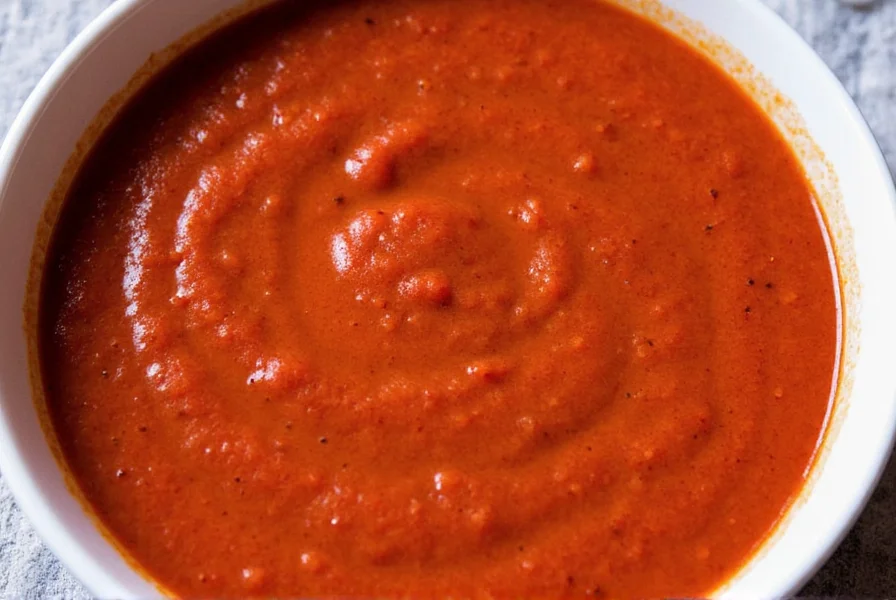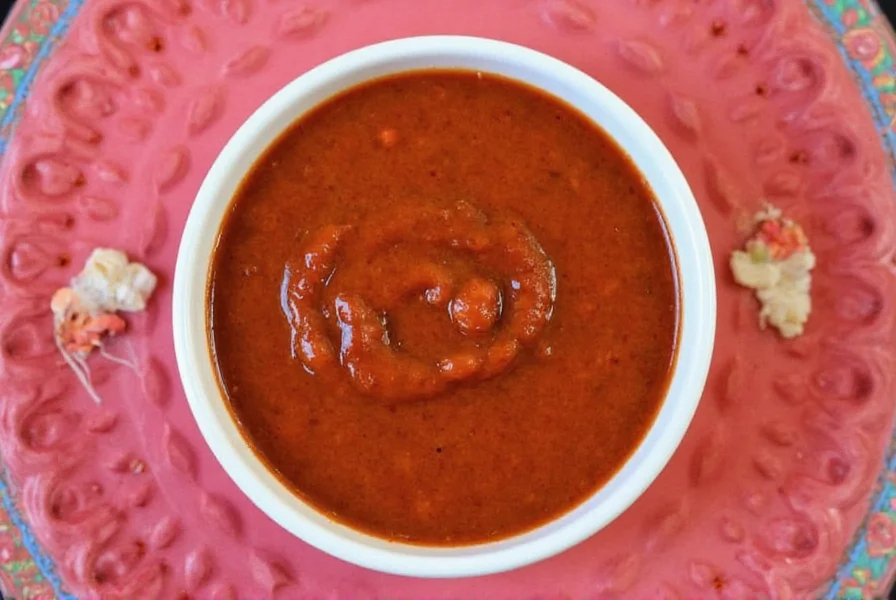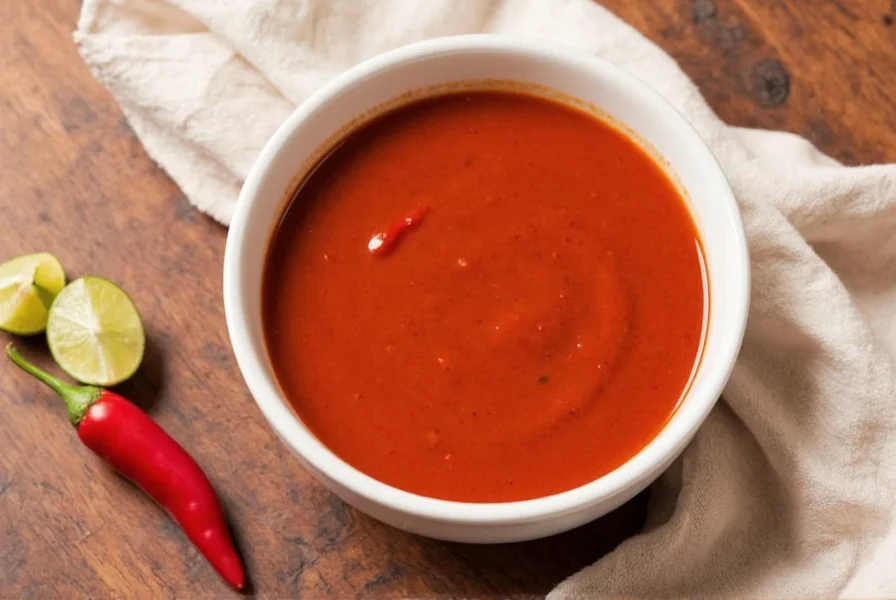7 Sizzling Secrets of New Mexican Red Chile Sauce That’ll Make Your Taste Buds Dance!
If you've ever bitten into a warm sopapilla slathered in New Mexican red chile sauce, you know exactly what we’re talking about—flavor that hits the soul. But this fiery blend is more than just a condiment; it’s a centuries-old tradition that tells the story of land, culture, and community.
In this article, we dive deep into the world of New Mexican red chile sauce, exploring its origins, flavor profiles, cooking tips, and even how to choose the best one for your pantry. Whether you're a seasoned chef or just someone who craves bold taste, this guide will have you reaching for the chile ristra every time dinner rolls around.
Table of Contents
- A Fiery Heritage: The History Behind New Mexican Red Chile Sauce
- Flavor Profile Breakdown: Sweet, Smoky, and Spicy?
- How to Make Authentic New Mexican Red Chile Sauce at Home
- Pairing Tips: What Foods Go Best with This Iconic Sauce?
- Buying Guide: How to Choose the Perfect Bottle (or Bag!) of Red Chile Sauce
- New Mexican Red Chile Sauce Goes Global: Modern Twists and Culinary Trends
- Final Thoughts: Why Every Kitchen Should Have a Jar of This Southwest Staple
A Fiery Heritage: The History Behind New Mexican Red Chile Sauce
The roots of New Mexican red chile sauce stretch back long before the United States existed. Indigenous peoples of the Southwest had already been cultivating chiles for centuries when Spanish settlers arrived in the 1500s. They brought European cooking techniques but quickly adopted the native ingredients—including chile peppers—that would eventually shape the unique cuisine of New Mexico.
Over time, two distinct pepper types emerged: the mild and earthy ‘Anaheim’ style and the more robust, smoky ‘Hatch’ chile, named after the town of Hatch, NM, where the perfect combination of soil and climate produces some of the most sought-after chiles in the world.
Today, New Mexican red chile sauce is a proud culinary emblem of the region, appearing on menus from Santa Fe to Albuquerque—and now, hopefully, on your kitchen counter too.

Flavor Profile Breakdown: Sweet, Smoky, and Spicy?
What sets New Mexican red chile sauce apart isn’t just its heat—it’s the complex layering of flavors that can range from earthy and nutty to slightly sweet and deeply smoky.
| Flavor Note | Description |
|---|---|
| Smokiness | Come from roasting the dried pods over open flame, especially in traditional Hatch-style preparation. |
| Heat Level | Mild to medium, depending on variety and preparation. Typically rated between 1,000–5,000 SHU (Scoville Heat Units). |
| Earthy/Grassy | Prominent base note, reminiscent of roasted vegetables and sun-dried tomatoes. |
| Sweetness | Faint fruitiness comes through, especially when using mature, fully ripened pods. |
| Bitter Undertone | Some batches may carry a slight bitterness if seeds or skins aren’t removed properly. |
Taste Like a Local
- Try it fresh from a farmer’s market roaster during harvest season (late summer to early fall).
- Compare sauces made from different regions of New Mexico—they each have their own terroir!
- Use as both a cooking ingredient and a finishing sauce for depth and brightness.
How to Make Authentic New Mexican Red Chile Sauce at Home
While store-bought options are convenient, nothing beats homemade red chile sauce made from scratch. Here's how to do it:
- Ingredients: Dried New Mexican chiles (whole), garlic cloves, onion, cumin, salt, water or chicken broth.
- Rinse & Rehydrate: Soak dried chiles in hot water until soft (about 20 minutes). Drain and remove stems/seeds if desired.
- Blend: Combine soaked chiles, sautéed onions and garlic, cumin, and liquid in a blender. Blend until smooth.
- Cook: Simmer mixture for 20–30 minutes, stirring occasionally, to thicken and develop flavor.
- Strain: For a silkier texture, strain the sauce through a fine mesh sieve or food mill.
- Store: Cool and refrigerate for up to a week or freeze for several months.
Pro Tip:
Toast the chiles lightly in a dry pan before soaking to enhance smokiness and deepen color.

Pairing Tips: What Foods Go Best with This Iconic Sauce?
New Mexican red chile sauce is a versatile condiment that enhances everything from simple beans to gourmet dishes. Here’s how to use it like a pro:
| Dish Type | Best Use | Why It Works |
|---|---|---|
| Breakfast Burritos | Drizzle over scrambled eggs and potatoes | Provides warmth and kick to start the day right |
| Carne Adovada | Simmer pork in the sauce overnight | Allows meat to absorb the deep, spicy flavor |
| Green Chile Cheeseburgers | Spread generously on buns | Offers a balanced heat that complements beef fat |
| Vegetarian Enchiladas | Layer in tortillas and bake | Enhances mild cheeses and vegetables with earthy spice |
| Sopapillas | Use as a dipping sauce | Serves as a savory contrast to sweet honey drizzle |
Secret Trick:
Add a splash of vinegar or lemon juice to brighten up heavier dishes—trust us, it makes all the difference!
Buying Guide: How to Choose the Perfect Bottle (or Bag!) of Red Chile Sauce
If making your own isn’t feasible, don’t worry—there are plenty of high-quality bottled or frozen New Mexican red chile sauces on the market. Here’s what to look for:
Key Features to Consider
- Origin: Look for labels indicating “Hatch,” “New Mexico,” or regional specificity (e.g., “Valley-grown”)
- Heat Level: Mild, medium, or hot—some brands clearly label SHU levels or provide tasting notes
- Consistency: Smooth puree vs. chunky with bits of roasted chile—depends on personal preference and use case
- Preservatives: Minimal additives are better—check for sodium content and artificial thickeners
- Form: Canned, frozen, or powdered—each has its pros and cons depending on shelf life and convenience
Top Brands Compared
| Brand | Origin | Heat Level | Form | Best For |
|---|---|---|---|---|
| Hatch Green Chile | New Mexico | Medium-Hot | Frozen | Authentic, restaurant-quality flavor |
| Ortega | USA (Commercial Grade) | Mild | Canned | Everyday use and budget-friendly meals |
| Santa Cruz Organic | Organic Certified | Mild-Medium | Bottled | Health-conscious cooks and vegetarians |
| Luna Rossa | New Mexico | Medium | Refined Puree | Finishing dishes or elegant plating |
| Red Duck Organics | New Mexico | Medium-Hot | Bottled | Gluten-free and vegan diets |
When to Splurge vs. Save
- Splurge: When serving as a showcase element (like in enchiladas or tacos), go for premium brands with clean labels and regional authenticity.
- Save: If you're simmering into stews or chili, a commercial brand like Ortega works just fine.

New Mexican Red Chile Sauce Goes Global: Modern Twists and Culinary Trends
Gone are the days when red chile sauce was confined to Tex-Mex diners and family kitchens in Santa Fe. Today, chefs across the globe are finding innovative ways to incorporate this vibrant condiment into fusion cuisine:
- Chili-Rubbed Steaks: A marinade of red chile, lime, and garlic adds Southwestern flair to grilled ribeyes.
- Red Chile Popcorn: Toss freshly popped kernels with melted butter and a few spoonfuls of sauce for an addictive snack.
- Chili-Chocolate Brownies: Believe it or not, the earthy spice pairs beautifully with rich dark chocolate.
- Smoothie Boost: Add a teaspoon to a tomato-based gazpacho or beet smoothie for an unexpected kick.
- Pizza Drizzle: Try it on a white pizza with goat cheese and caramelized onions for a sophisticated twist.
And let’s not forget the growing number of plant-based eateries experimenting with red chile sauces to add depth to veggie burgers, jackfruit tacos, and grain bowls.

Final Thoughts: Why Every Kitchen Should Have a Jar of This Southwest Staple
Whether you're a die-hard chile head or just looking to spice up your weekly meals, New Mexican red chile sauce deserves a permanent spot in your pantry. Its rich history, adaptable flavor profile, and versatility in the kitchen make it a must-have for any home cook or adventurous eater.
From rustic homemade batches to carefully crafted artisan bottles, there’s a version out there for everyone. Once you experience the warmth and complexity of authentic red chile sauce, you might just find yourself adding it to everything—even toast.
So next time you see those red ristras hanging proudly outside adobe homes, remember—they’re not just decoration. They’re a symbol of flavor, heritage, and heart.












 浙公网安备
33010002000092号
浙公网安备
33010002000092号 浙B2-20120091-4
浙B2-20120091-4